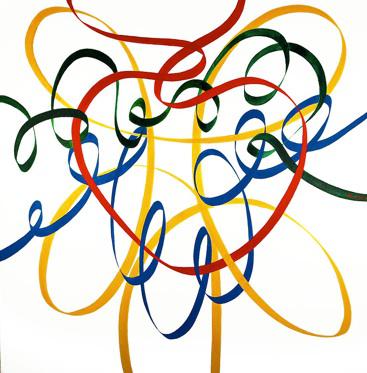How I wrote it: the Amnesty pen letter
In this, the ninth in a series of interviews with leading fundraising writers, Karin Weatherup talks to Fergal Byrne about the legendary Amnesty pen letter she wrote for Amnesty International – the pack was Amnesty UK’s banker for 10 years or more and was copied or adapted by many Amnesty International sections around the world.
- Written by
- Fergal Byrne
- & Karin Weatherup
- Added
- January 14, 2013
In this interview, Karin explains how she came to write the letter, about the power of great content and how this letter taps into the importance of family – the most powerful thing in our lives – and the urge to protect the people we love.
What you will discover in this interview
- How to convince people that your charity can change things.
- The importance of detailed case histories.
- How to tread the fine line between taking your readers to the edge, but not so close that they stop reading.
- About techniques: when to dump them, when to use them, how to stop them getting in the way.
- How to find the click point that is important to the donor and the charity.
- That you should listen to your own feelings.
- When to use an incentive device.
- How to handle a delicate situation.
- How to approach asking for money.

FB: What would you say was the particular challenge with this pack? How did you approach this?
KW: Amnesty has always had some fantastic stories to tell, but has been cautious about claiming all the success because there were often a number of other organisation’s involved in helping, for instance in getting someone out of prison.
However, we felt that Amnesty would have to do precisely that. We had to find cases that would make people feel that they would make a difference. It’s not hard to make people feel emotional; it is much harder to get them to believe that something can actually be achieved with their money.
FB: How do you convince people that Amnesty can actually change things?
KW: Fundraisers often think it’s enough to tell a powerful story in order to get people to donate, but that has not been my experience. Everybody knows the appeal is for a good cause, but they need to understand that Amnesty can actually do something. That Amnesty makes things happen thanks to people’s generosity. That, for me, is the challenge.
 View original image
View original image
In this particular appeal we were given no particular brief other than to bring as many people on board as possible.
FB: The stories in this letter are very hard hitting and feel very real. How important are detailed case studies?
KW: Initially, I was given some case histories, but they just didn’t grab me. I was looking for something emotional that would reach our audience – real stories that were detailed enough to make people feel that they were actually there. Too often stories dehumanise the victim; they seem as if they have been just boiled down to a few things that will tug at people’s heartstrings.
 View original image
View original image
I went to see a few people at Amnesty to dig around for things I could write about. Things that I felt would connect in some way to the audience, even though the audience was just defined as ‘bring as many people on board as possible’.
I came away from Amnesty with a big box full of the original testimonies of human rights atrocities. The testimonies were originally intended to bring the perpetrators to court, so they were very detailed. The box contained testimonies given by women who had been raped in Bosnia, as well as other accounts of torture from around the world.
FB: How did it affect you, reading all this disturbing material? How did it impact the approach you took in this letter?
KW: At the time I was taking care of my two-year-old son and was exhausted juggling parenthood, a home and work. Reading these accounts, I really started to see all these stories of torture within the context of the family; how others use our love for our families to hurt us. That, to me, is far more cruel than burning somebody’s feet.
One account, for example, told the story of how a nine-year-old boy was made to beat his mother unconscious. It was an example of how people manipulate our love for our families and use it for shocking and destructive purposes. I read all the reports of torture and began to understand how a parent would feel seeing any of this happening to one of their children. What kind of mental torture were that mother and son feeling while he was being forced to beat her?
I studied the reports for three weeks and became angry, so angry that it made me feel sick. Normally, I manage to keep a distance from my stories, but not with this one. I would read these stories every night and would fall asleep surrounded by them with my son tucked up in bed with me.
I think I have done my best work when the charities have given me the best material to work with – or, more often, helped me to go out and find it. It’s not an accident. It begins with great content. I think that’s the job of a copywriter; to be able to take people to these terrifying places and show them what they can do about it.
FB: There is always a danger that people will throw something like this away because it’s too horrible, or read it and think, ‘Yeah, but they can’t make any difference?’ How did you approach this challenge?
KW: When we’ve got to that tipping point where people could go, ‘no, I’m scared’. We have to say, ‘hang on a minute, hang on a bit’. Hopefully, not in a way that looks like finger wagging.
I think my aim all the way through was to say, please don’t stop reading, please don’t stop reading!’ I felt that if these people, the victims, had been strong enough to survive the torture and abuse and lived to tell the tale, then I felt that I owed it to them to tell their stories to people here. But you also have to make people feel safe about reading it, by letting them know that there is a point to it, you don’t want to be gratuitous any more than they don’t want you to be and, if they stick with it for a minute, it does get better.
I generally wouldn’t start a letter going straight into a case study. I do it sometimes when I think there is a good reason to but, on the whole, a conversation begins with a handshake. In the context of this letter I felt it was important to warn people about what was coming, but also to say, ‘but, please, please bear with me’.
FB: How did you approach writing the letter? How much attention did you pay to the writing style?
KW: Quite frankly, I was just really angry. There wasn’t a lot of thought. It’s an example of a good charity when they give you material that really takes you to the heart of the situation, when it leaps off the page at you. If you only give people a few bare facts they won’t see the relevance or the humanity of the story. You need to take them right to the edge. Writers need to feel like they’ve been there and now own some responsibility. As a writer, I feel enormous responsibility towards the people I’ve interviewed. Sometimes they’ll tell me things that I know would make an amazing story or a headline but I would never dream of using it if it would take advantage of their vulnerability.
When writing a letter, I just think in terms of common sense and ask if it’s relevant to the reader. I want them to say to themselves, ‘My God! What if that was my child and me? What if my child was being made to beat me?’ It’s not about the reader’s pain; it’s about the emotional torture that is inflicted on them. I put all this in the context of the family. So when it’s women, as it is in this letter [there was a similar letter addressed to men], it’s all about how you see her, as a mum or a wife. If it’s a man, it’s about a father or a husband. I want people to read into this what’s important to them so they can make sense of it, up under their ribs.
This isn’t just about Amnesty saying this is a good cause and if you donate money we’ll stop it. This is about saying: think about the one thing that’s most visceral in you. Every cell in your body is programmed to protect the people you love and the shredding of that by these torturers is obscene. It’s more obscene in my mind than physical torture. So that’s what I was trying to get at.
FB: Tell me about the headline?
KW: There was a headline on the envelope that said, ‘Why do women and children come first?’ It was supposed to spike people’s interest. Back then there was very little testing going on so we never knew how many people actually opened the letters.
But the letter came first, before the headline. I wanted it to read very much like a very pissed off person, not an organisation. Too often direct mail sounds like a charity standing on a podium broadcasting its story, no matter how interesting the story. Too often it doesn’t sound like a real person.
FB: How do you approach the question of writing technique?
KW: When I wrote this pack I had been doing similar work for about seven years and I knew a lot about the technique of writing these sorts of letters. But in this case I was so angry I dumped a lot of the technique. I wanted people to do something, so it became socially intuitive to say, ‘hey, stop for a minute’. So uppermost in my mind was not just telling the story of torture. Uppermost in my mind was, ‘look, we’ve got to do something about it’. It wasn’t a copywriter’s response; it was just a human response. And I think if charities can elicit that from a person, that’s when they’ll get the best stuff.
I think that’s the single most important thing I’ve learned doing this work. You have to think of it not as something you are writing down. You have to think about how you would approach it if the person you want to move were actually sitting in front you, across the table, and you could look her in the eye.
It’s also important to make it relevant to the reader. Here in the Amnesty letter, I’m trying to make it relevant to them through the most powerful relationship in their life – which is their family relationship. You need to find the point where the story is both relevant and interesting to the audience, and show them what your charity can do about the problem.
I’m not saying that you dump the techniques. I’m saying they have to become totally invisible and instinctive. Direct marketing techniques, if they go too far, get in the way of a conversation. I also believe firmly that the letter has to be interesting. And I think the Amnesty thing, while horrible, is interesting.
FB: This letter focuses, in a powerful way, on families. What brought you here?
KW: In general, I try to get great content and find a way of making it relevant to a particular audience. Sometimes I might know a lot about the audience, sometimes I have to just rely on certain universal truths about what’s important to people. I always spend a long time working around what that click point is between what’s important to the audience and what’s important to the charity. It worked in this case, but it doesn’t always come out like that. That’s what you’re aiming for – finding the click point that’s meaningful to both parties.
Here I did that through ‘family’ and the urge to protect the people you love. I was reading my way through that cardboard box, those accounts of torture, I had my two-year-old son tucked up in bed with me because I literally had to do it at night. I’d get into bed with this box of horror. I’d recall reading work by Indra Sinha, who wrote the Amnesty ads, and which made me want to do this job. He said that as a copywriter you’ve got to find your own voice, and I think that’s true.
Actually, it’s more about listening to your own feelings rather than your own voice because I think the voice has to be used to distinguish the charity. I would say that if somebody doesn’t have feelings about a cause, they’re not the right writer for it.
FB: Where did the idea for the pen come from?
KW: With this letter, I wanted to take the reader into the other side of the equation – which is obviously, the side of the torturers. I wanted to make people ask themselves how someone could do that. I read stories about police and prison guards using domestic items to hurt people, like pens, kettle flexes, screwdrivers… The pen became so obvious because Amnesty has done a lot of letter- writing campaigns. We used to use it to sign up members for them. I’m not a fan of putting in irrelevant pens or gifts, but I wanted to use the pen because it was real to both Amnesty and to the subject matter: torture.
Having a pen inside an envelope makes it quite knobbly and back then it was unusual. Partly the idea was to get people to open the envelope. I don’t think the pen itself gets people to actually take action but, then, the pen got them to open the envelope. Now we throw these things away because we have so many of them.
I think sometimes when people talk about the pen pack they only think about the pen. Although it ran for at least 10 years, I don’t know whether they ever tried a letter without the pen. I certainly never did a variation of that. I think there is a danger of fixating on the pen. It is an important part of why the letter had the impact that it did – but I think the letter itself played an important role.
FB: Is there a risk of exploiting the subject of the case? How do you handle this delicate relationship?
KW: I work very hard to get into the skin of the person I am writing about. We interview people, even if it’s over the phone to a refugee camp overseas. We find people who want to tell their stories, who want their stories to be told.
I’m very careful when I speak to the people being helped by a charity and to be very clear with them how their story could be used. So I don’t believe we’re exploiting them. We try to give people as much control over their stories as possible. I always ask for people to have sight of their story if possible before it goes out into the world. The charity exists to serve those people, they have to come first, not what might pique the donor’s interest.
You need to paint a picture for people. Not just about the things that happened, you also need to show the person concerned. That’s what charities need to do. I don’t think they put enough effort into giving people really interesting and strong content.
FB: How do you approach asking for money?
KW: You have to treat people as partners. That changes the whole tone of the letter. It changes the structure. You can’t just say, ‘please give us a donation’. You have to be absolutely clear in explaining why it’s needed, but present your case in a way that speaks to some strong value or experience in the audience. You can’t just say money benefits the charity. You have to write in a way that connects all the benefits together right down to the end result.
FB: Can you tell me how you approached the design of this pack?
KW: I worked with Jon Harvey on it. We wanted the pack to look homemade; we didn’t want it to look like it had gone through an agency. We debated long and hard about the pictures to put in. It was then that I sat down to write and the story just flowed out. There is a lot of writing technique in the letter, but it avoids all the fundraising clichés, like ‘making a difference’.
FB: Howard Luck Gossage said people read what interests them and sometimes it happens to be about fundraising…
Completely. In my mind it’s like a really interesting Sunday supplement feature that hooks people. So in the end you don’t even have to ask them for money, because you’ve so captured them they just think, ‘God, I’d really like to do that’.

















